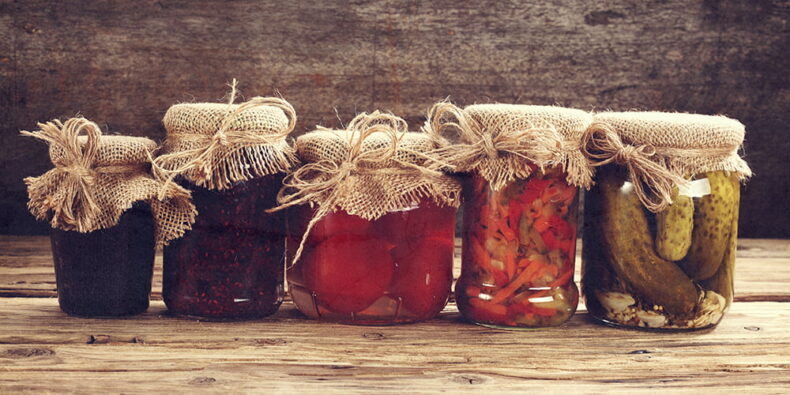As summer comes to an end, we are stocking up on all the delicious summer…
So you wanna make a pickle? Here are some options for you to play with.
METHODS OF PICKLING
Quick Pickles
Produce being pickled is cleaned, trimmed, and cut or left whole. In some cases, it’s cooked or blanched to preserve colour. Produce is packed in jars, then jars are filled with a heated pickling liquid (usually made up of some kind of vinegar, spices, sugar, and salt).
Works well with: cucumbers, carrots, cauliflower, hot peppers, sweet peppers, green beans, cherries, crab apples, beans
Salt (either dry or brined)
Produce that benefits from having some liquid drawn out before pickling is ideal for this method. Produce is cleaned, trimmed, cut, and tossed with salt or submerged in a salt brine for a few hours to a day. Produce is then rinsed, drained, and packed as in the quick pickling method. The salt draws out liquid from the produce, which creates more space for the pickling liquid.
Works well with: cucumbers, zucchini, cabbage, eggplant
Vinegar-brined
The intention of this method is the same as the salt brined method—to draw out water from produce. Often, this happens in several stages, with soaking in vinegar brine and salt brine over the course of a few days.
Works well with: watermelon rinds, cucumbers, some other fruits
Fermented
This method is completely different from the previous methods, though a salt water brine is used. Produce is submerged in a salt water brine and left to ferment, often at room temperature. The salt draws liquid out of the produce, and naturally occurring microorganisms digest the sugars. This process forms lactic acid, which lowers the pH and gives a tangy, complex, pickled flavour. Sauerkraut is the classic example of a fermented pickle.
Works well with: cabbage, cucumbers, peppers (must add vinegar to lower pH), tomatoes, carrots, beans




